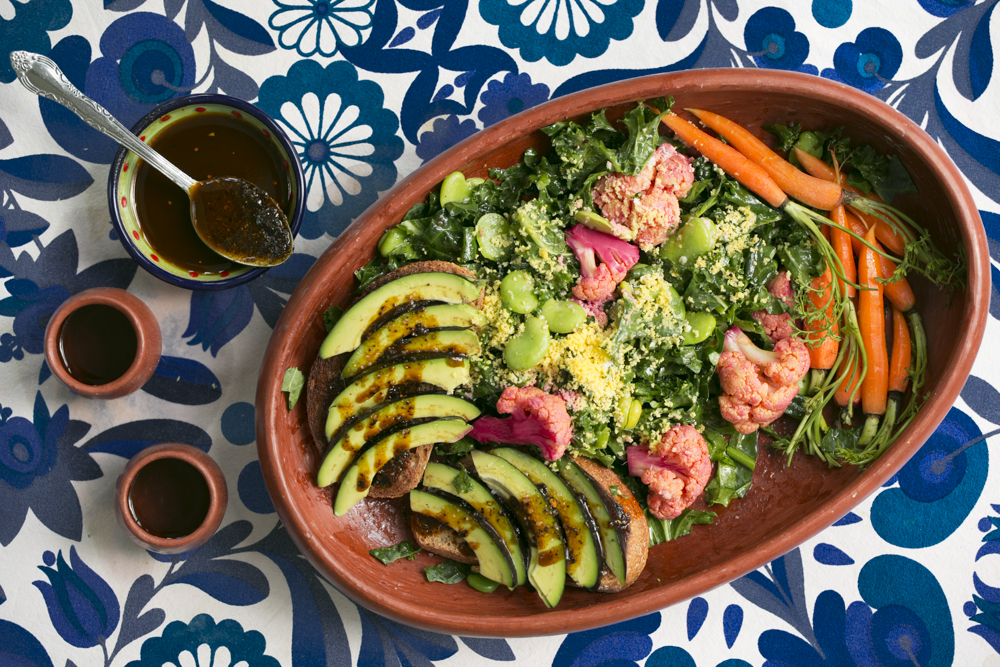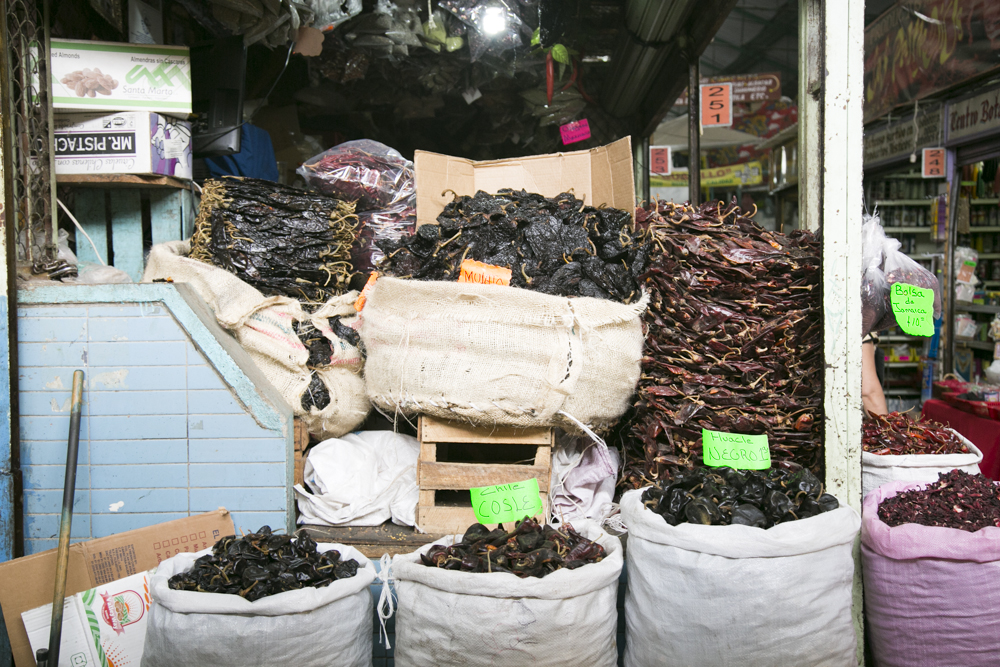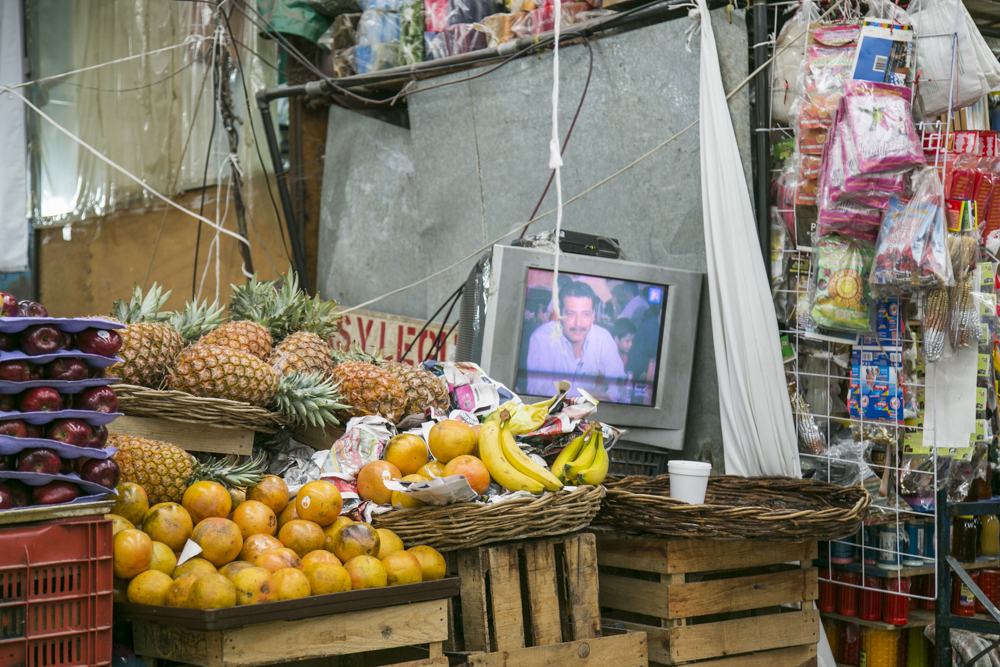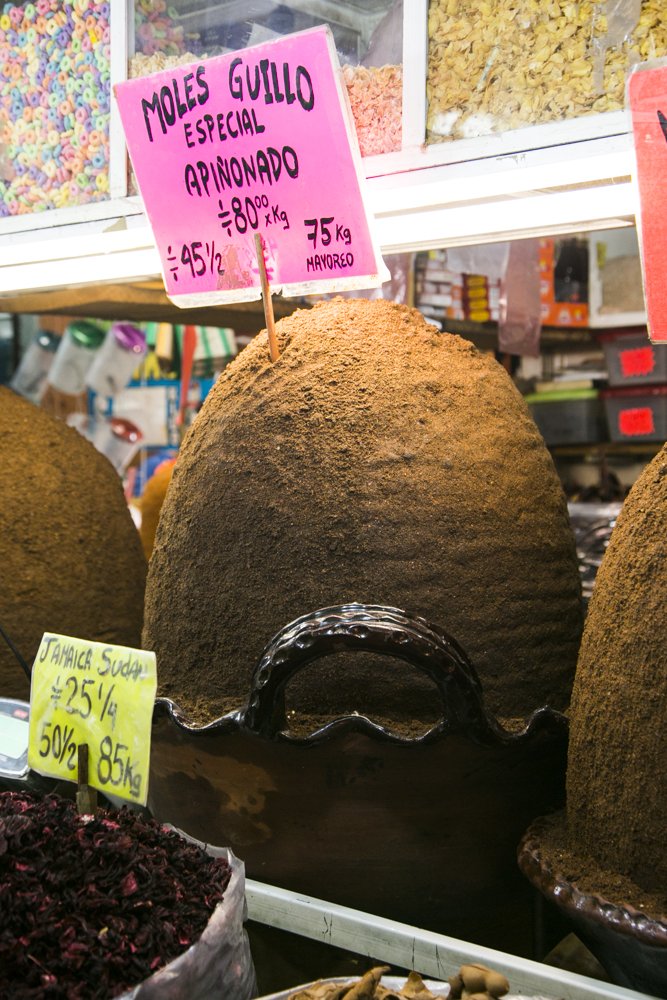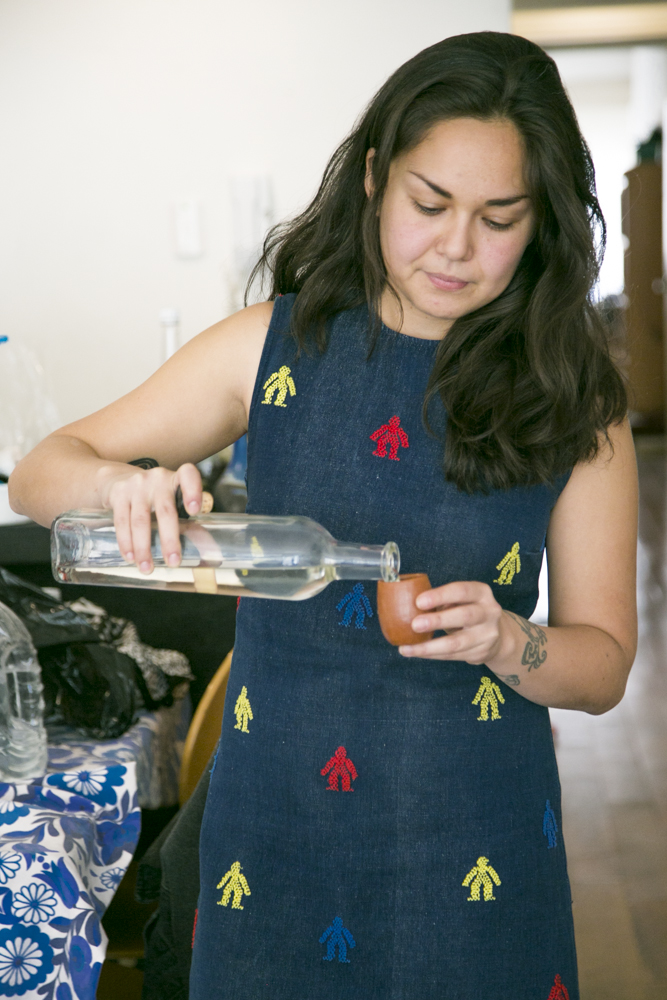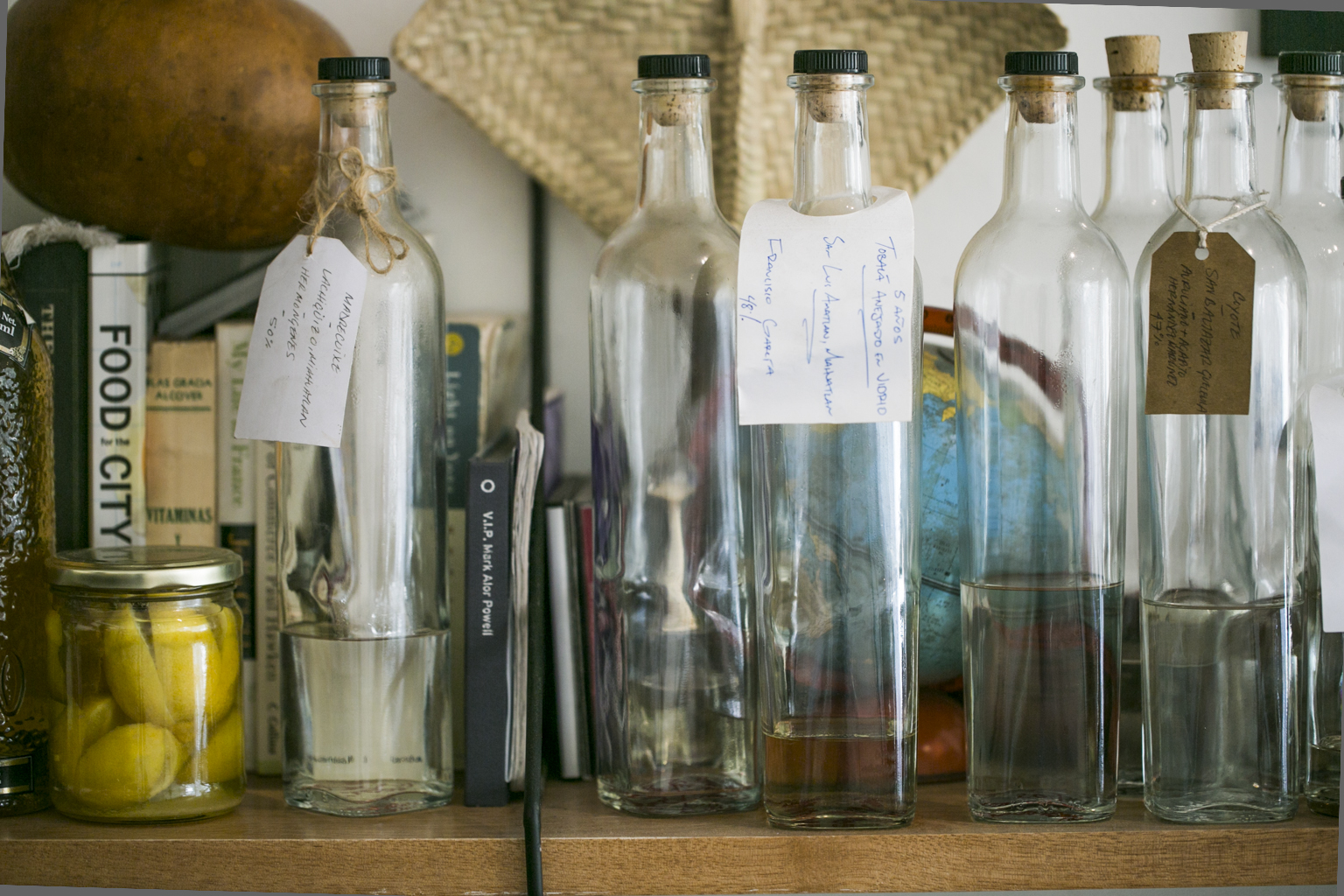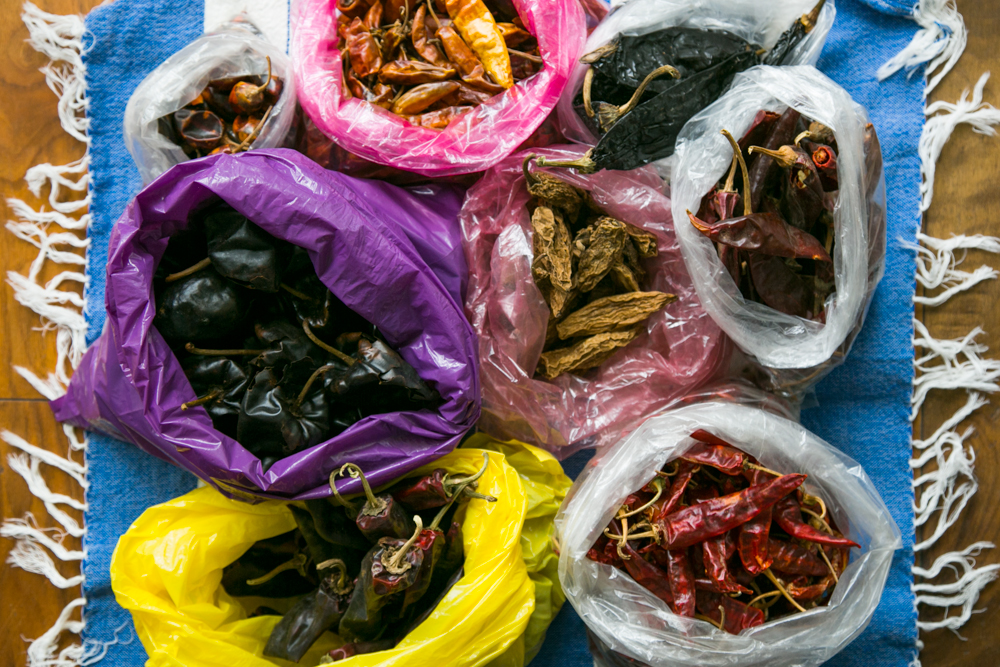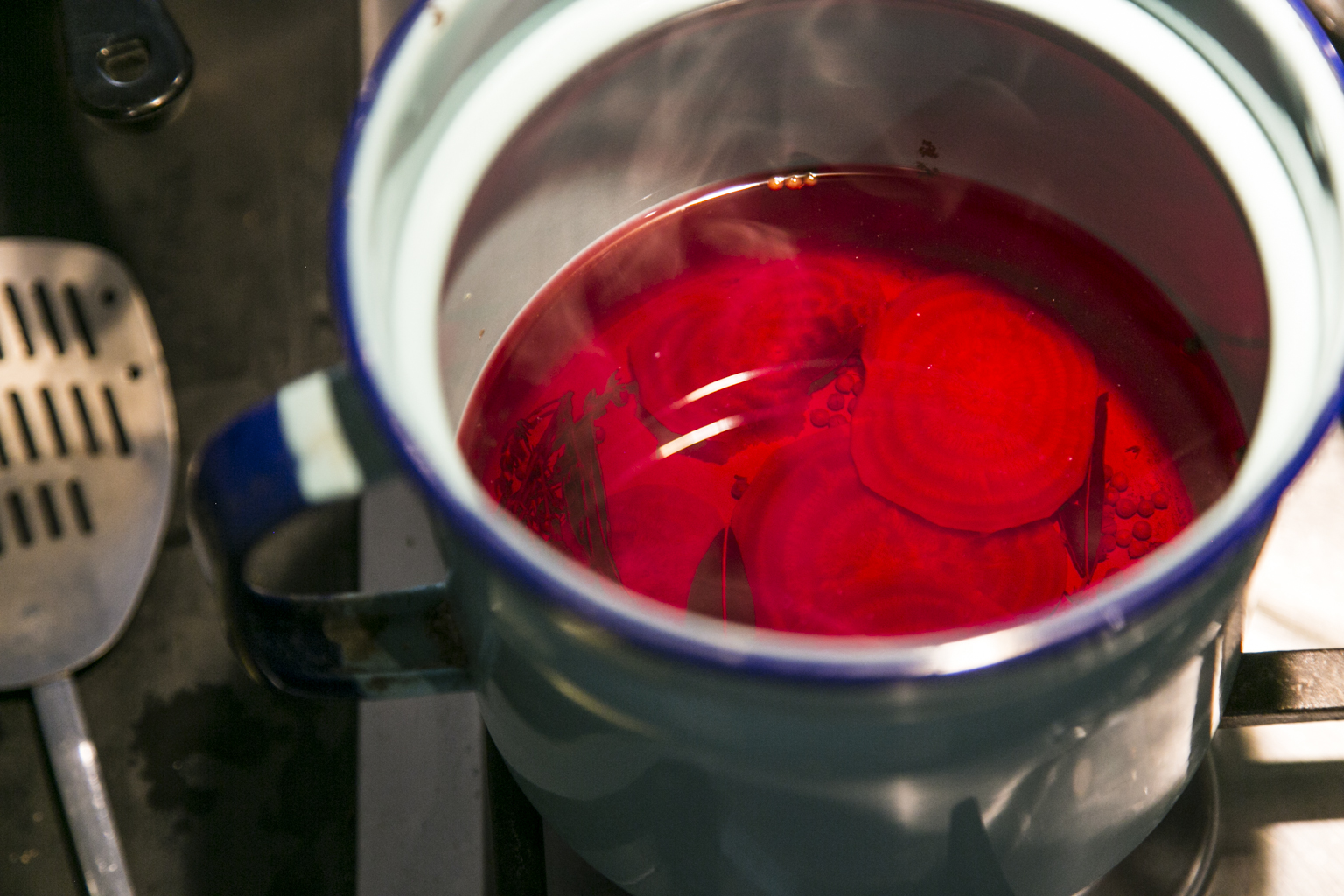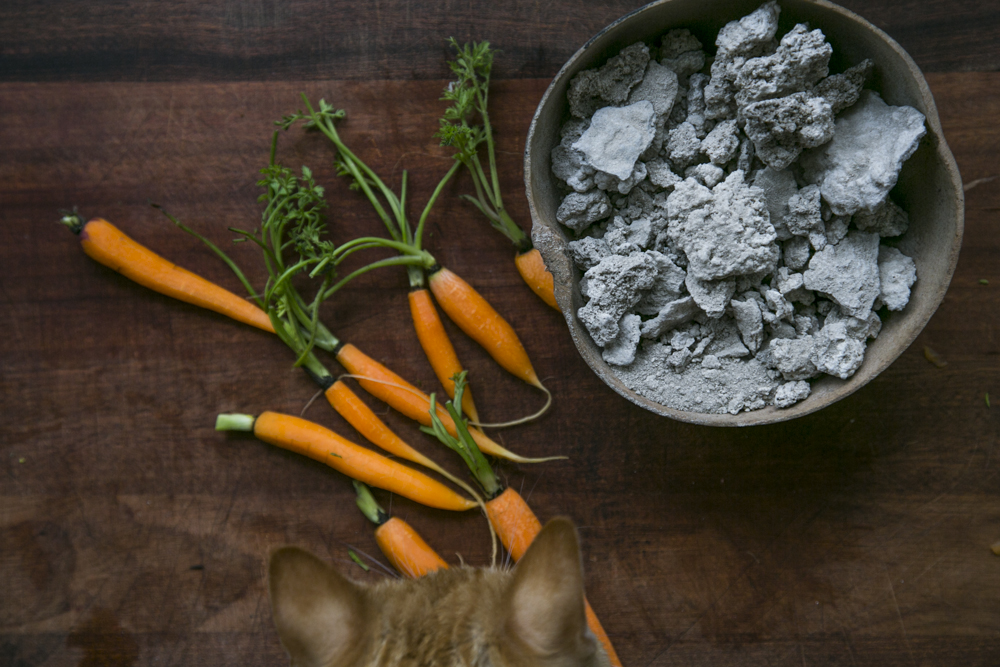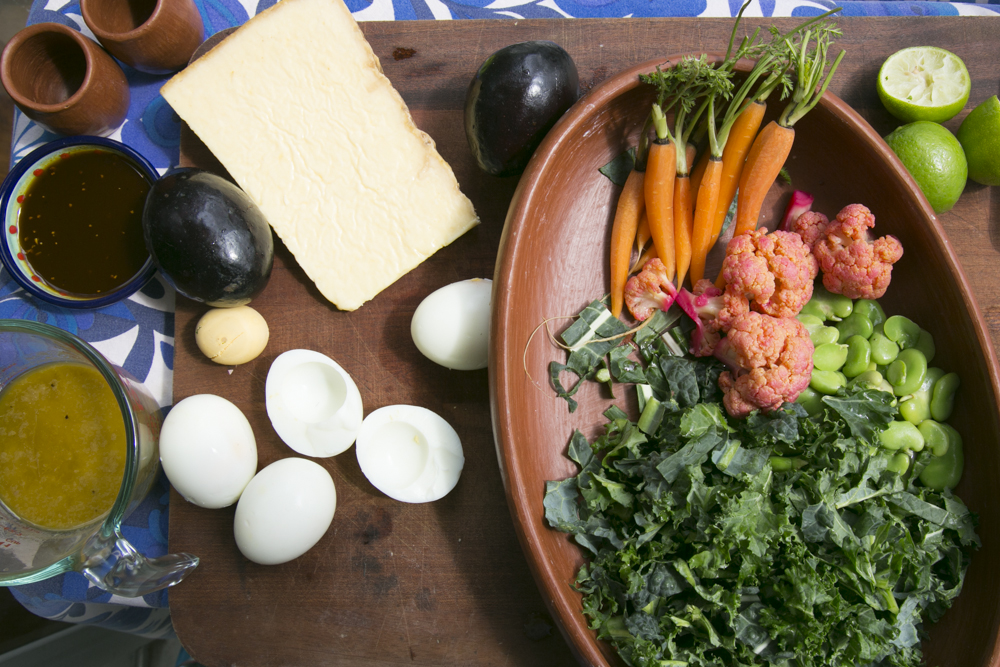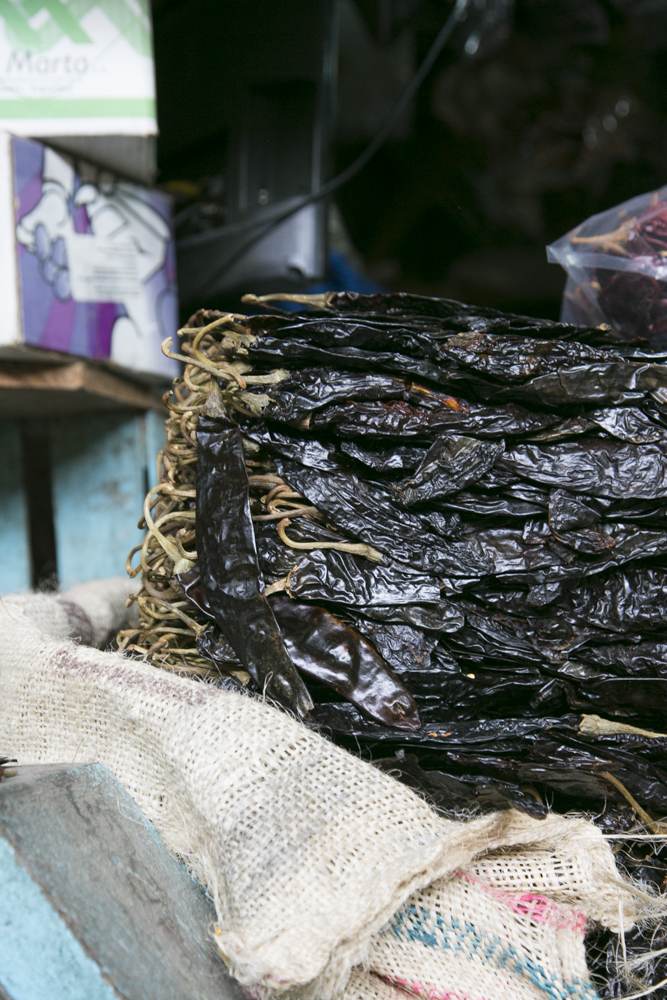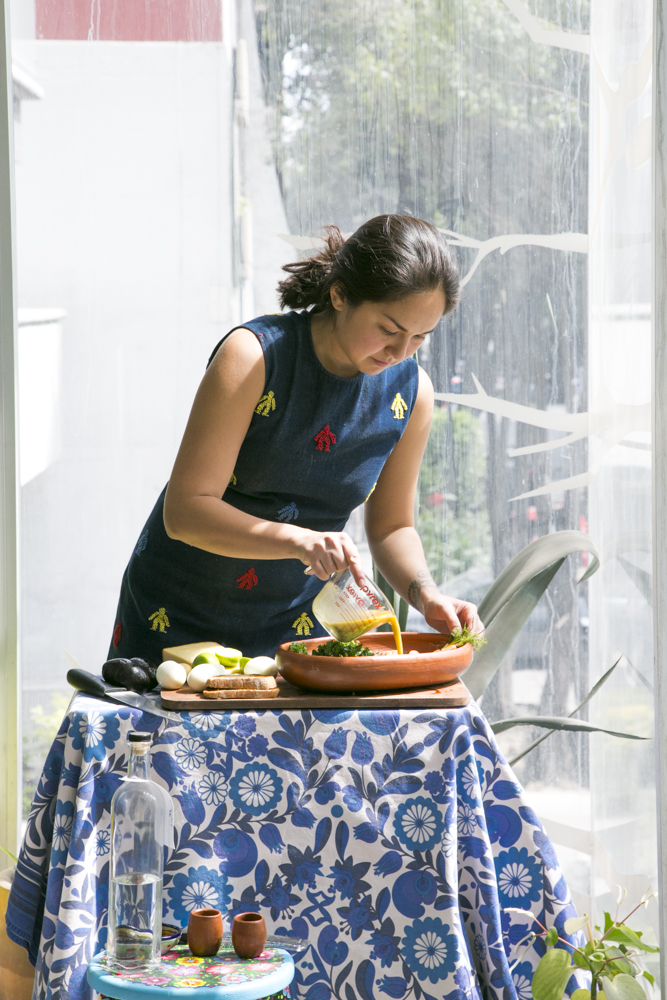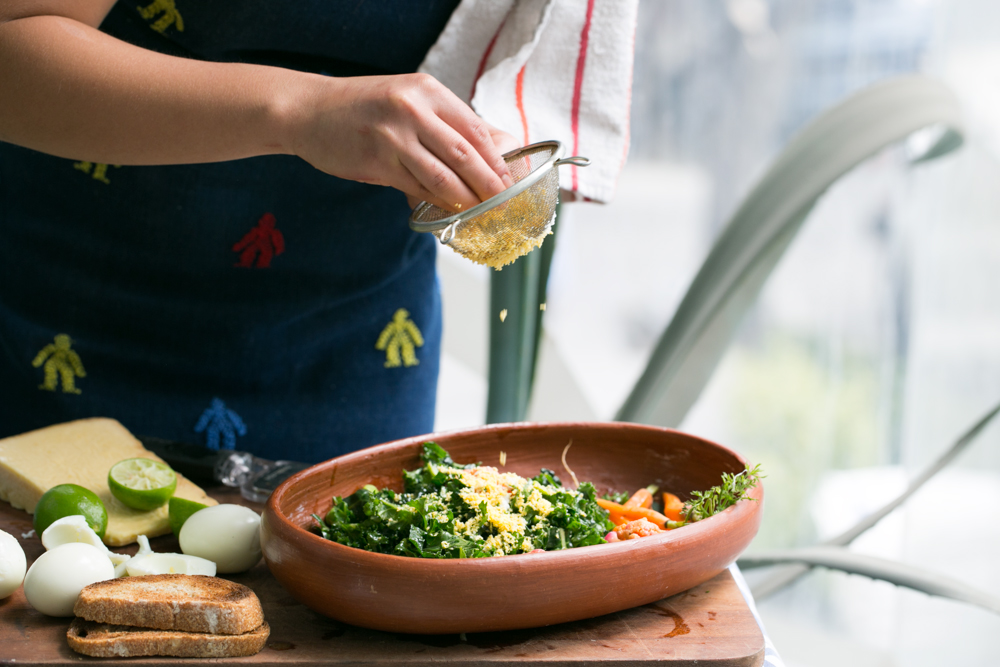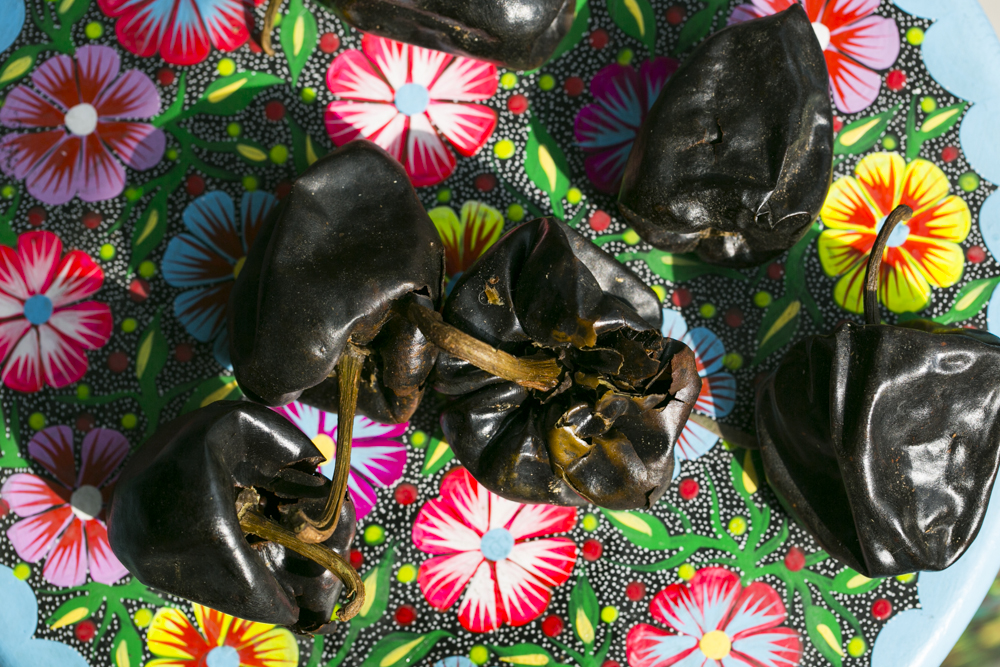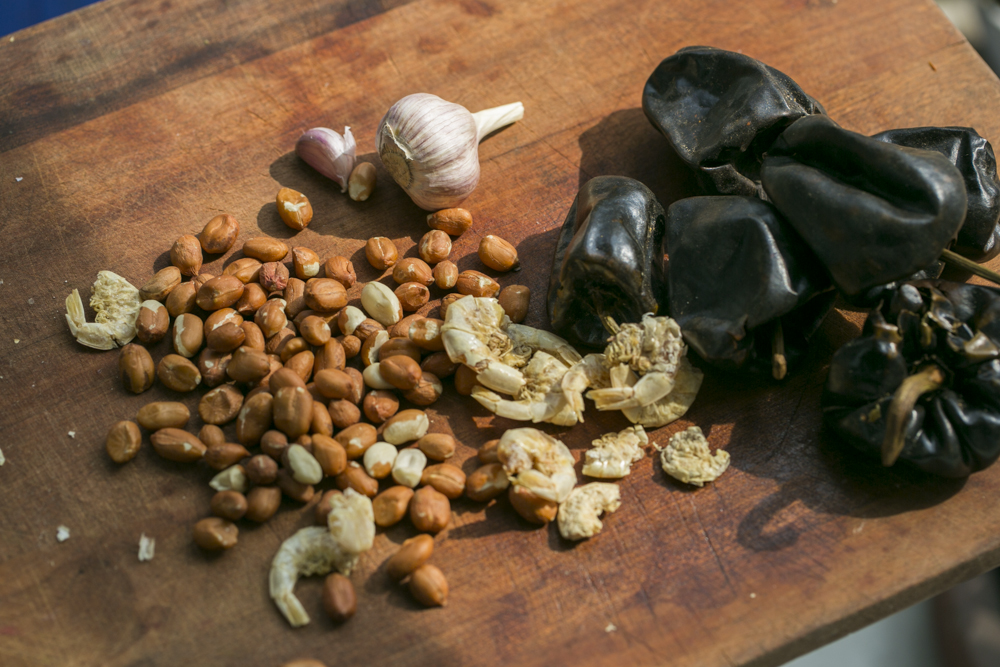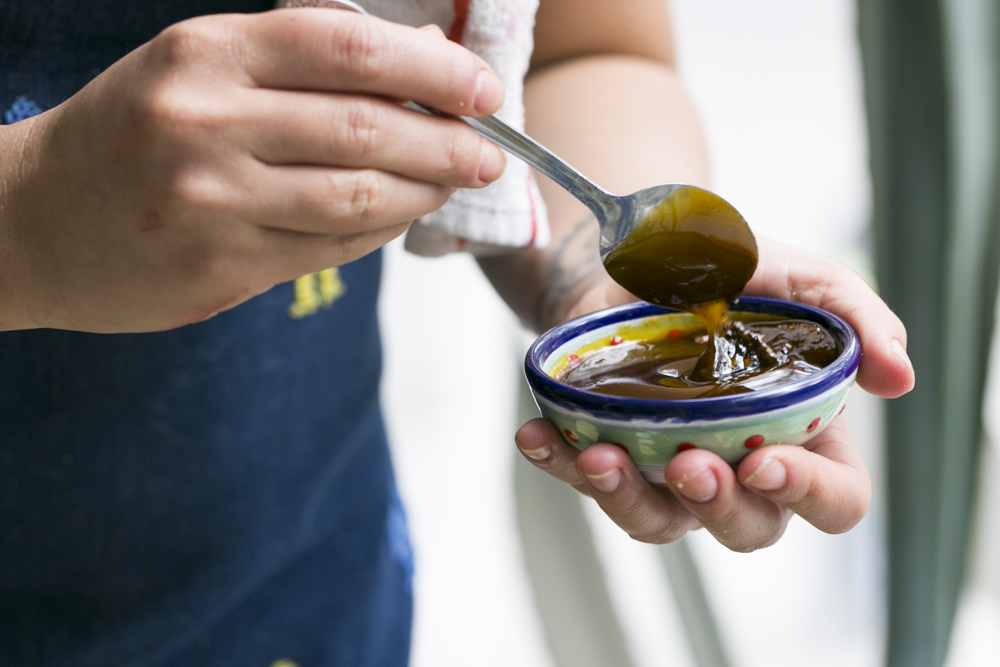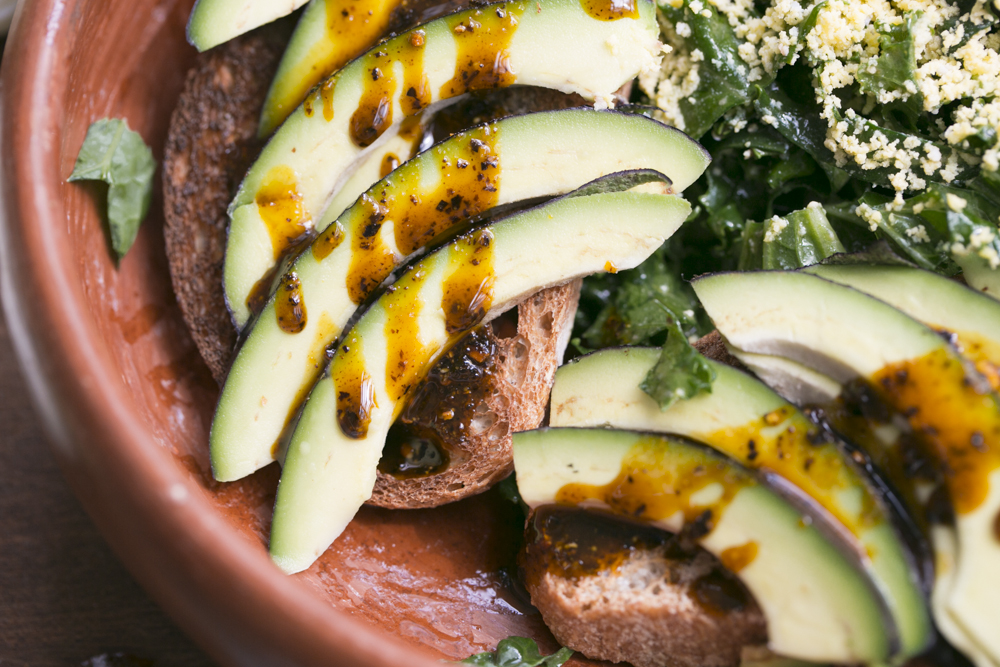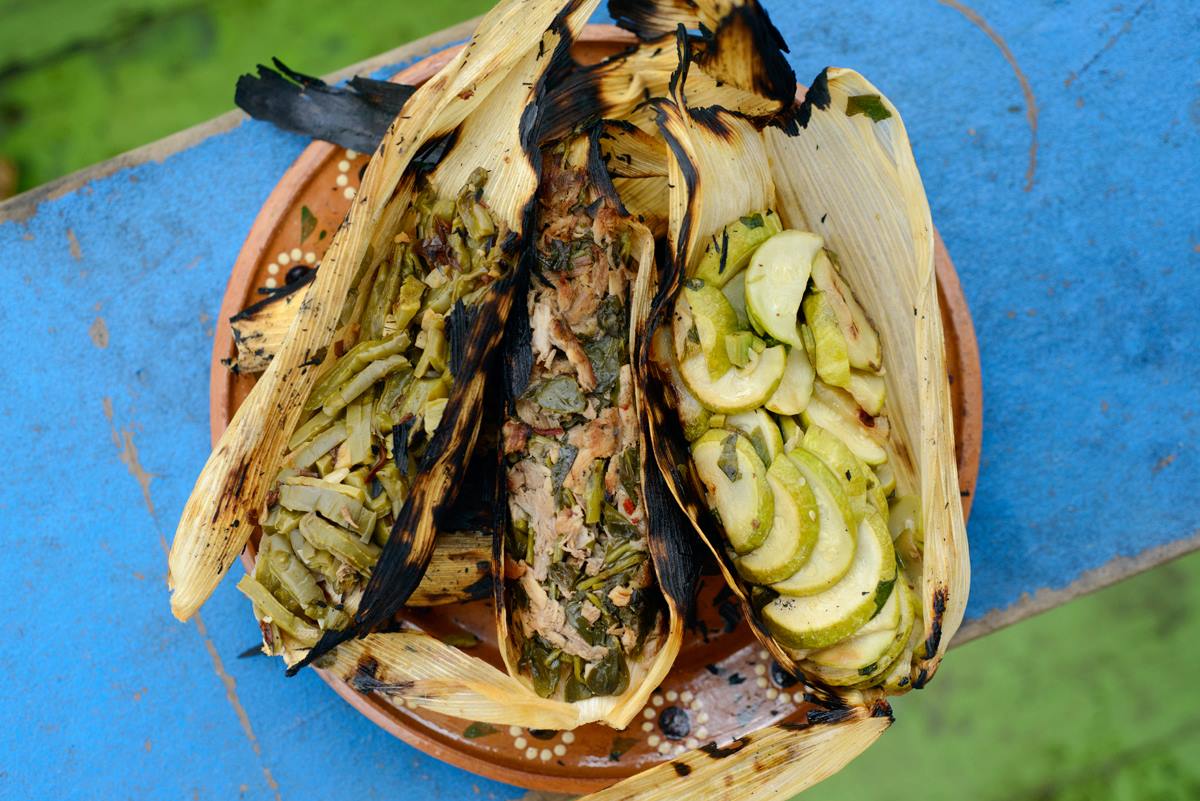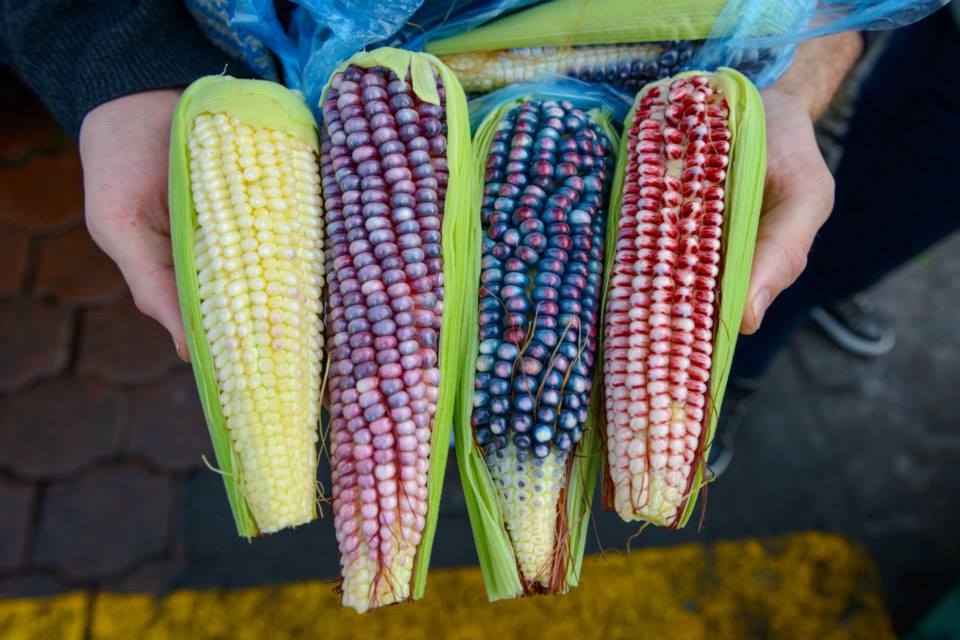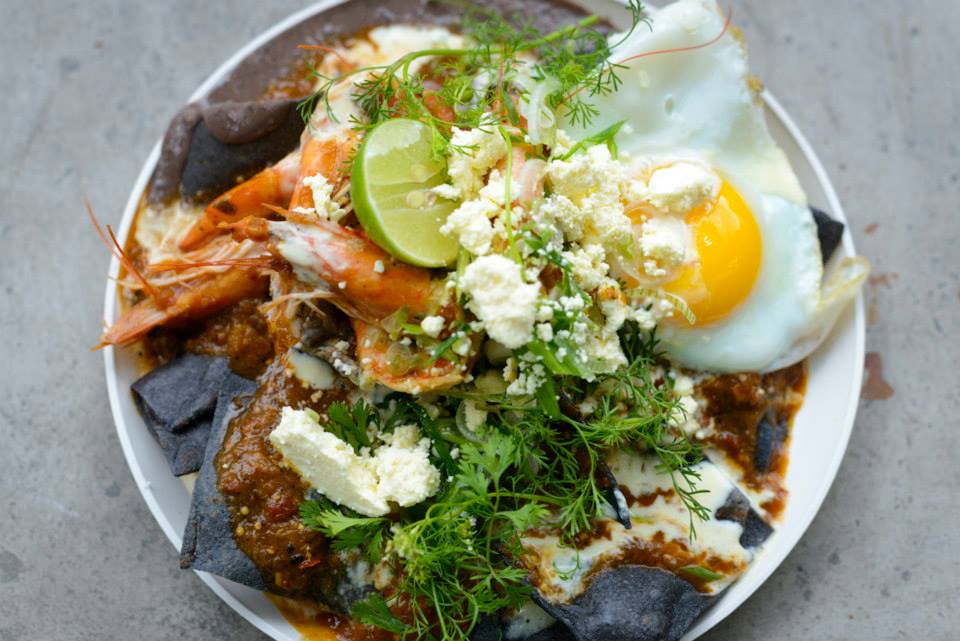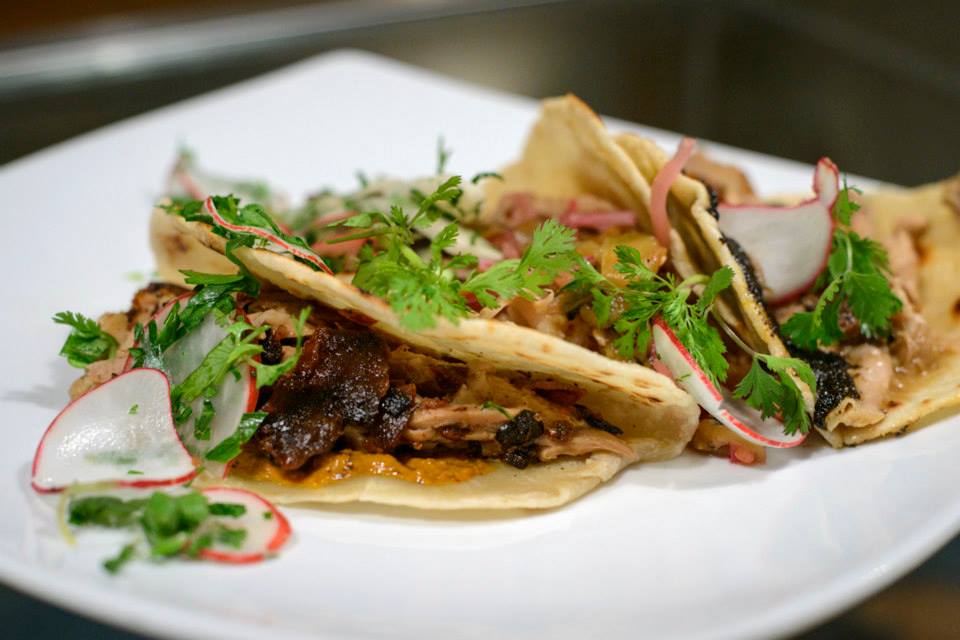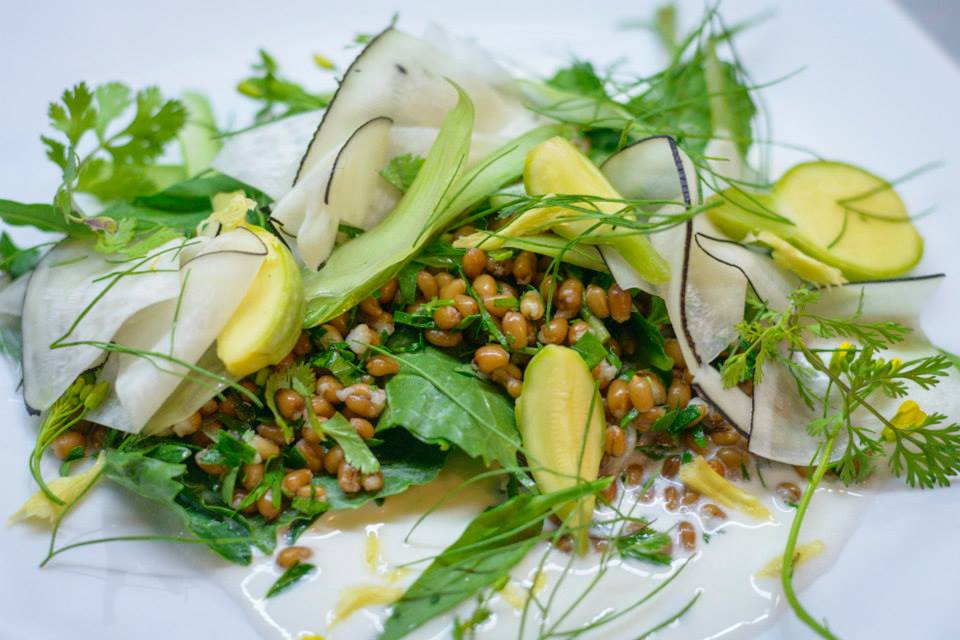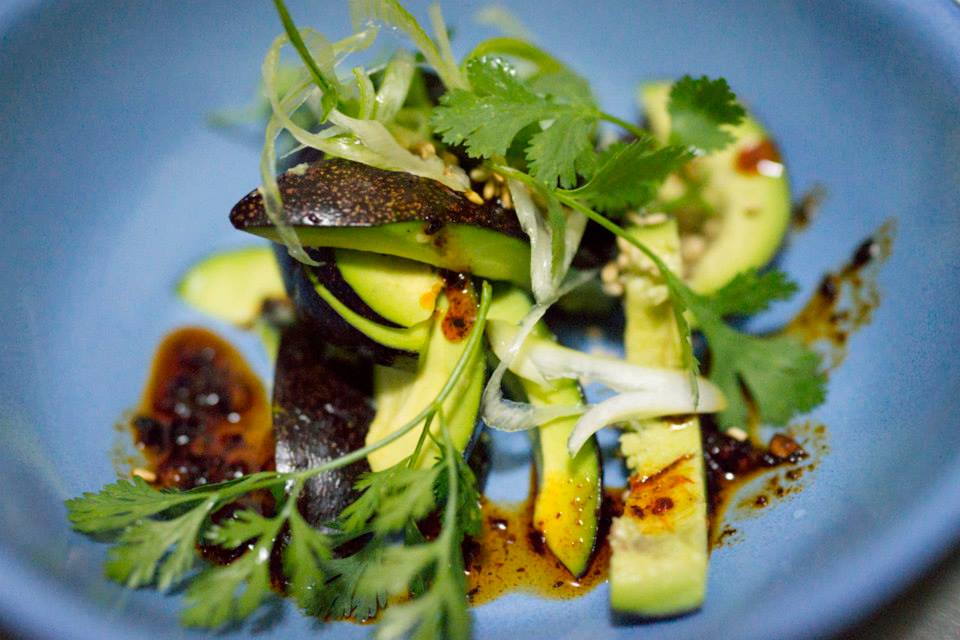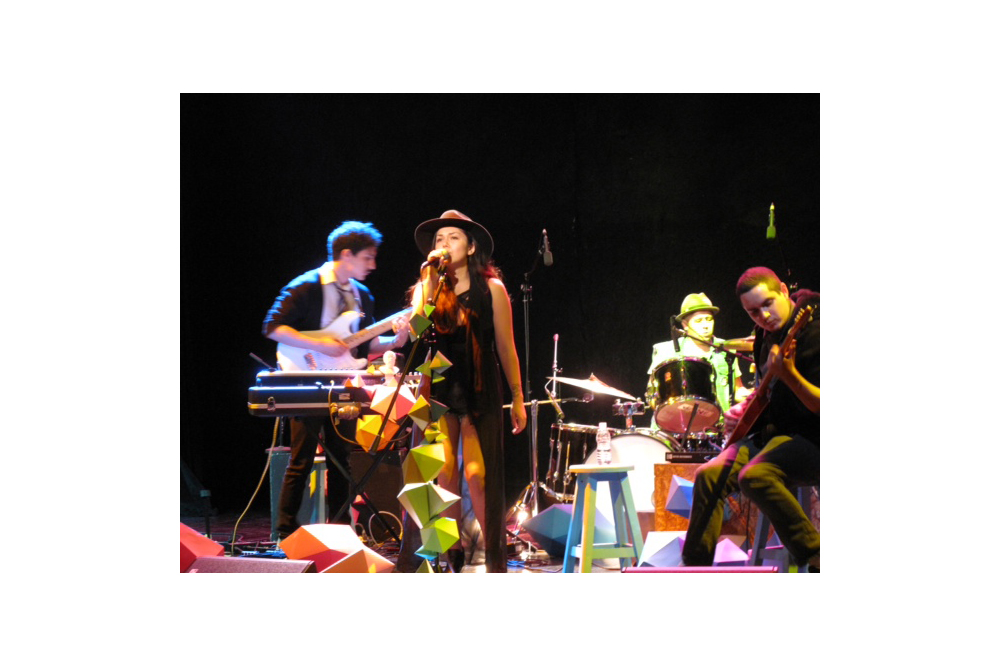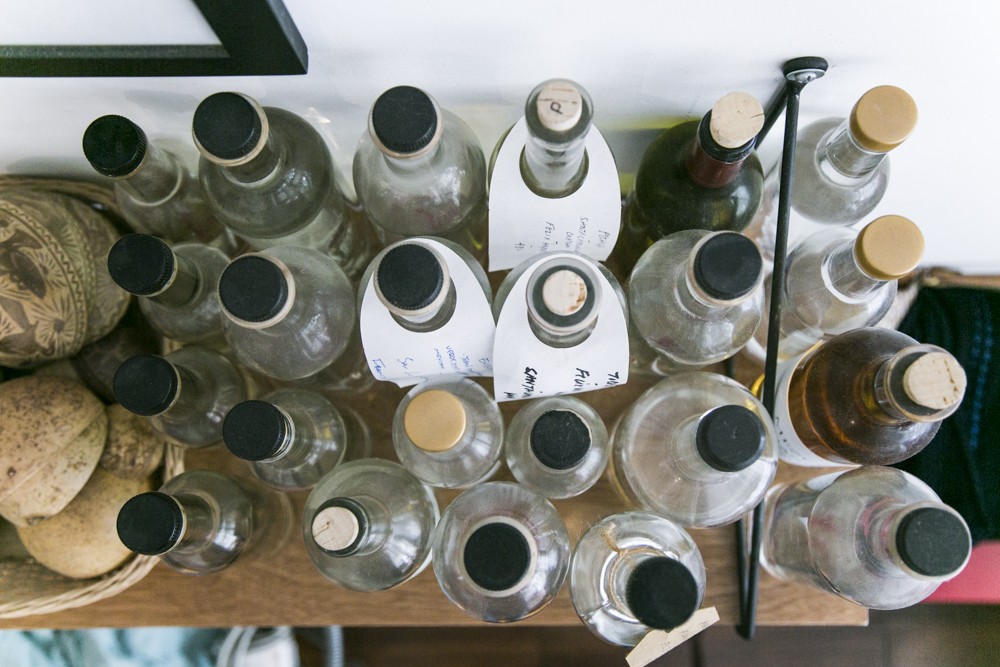Kale, Quick-Pickled Cauliflower, Avocado Toast with Chilhuacle Chili Salsa
Niki Nakazawa’s Mexico City Salad With Avocado Toast and Peanut Chili Salsa
POSTED UNDER
- Entree Salad,
- mexico,
- Winter
INGREDIENTS
- AVOCADO,
- beet,
- cauliflower,
- CHILI,
- fava beans,
- kale,
- peanut,
- shrimp
NOTES
This salad features something special: beet-pickled cauliflowers, which gain their fuchsia hue from several slices of the humble root. It is worth the extra effort is required to prepare them; namely. They need an overnight stay in the fridge to reach peak flavor. So, whip them up the day before you intend to serve the salad.
The chiles and dried shrimp featured in the salsa sound exotic, but one of them is relatively easy to find. For the dried shrimp, check out an Asian market near you. The chiles, however, are a different story. Chilhuacle Negro chiles are notoriously hard to find outside of Oaxaca. It’s not an exact match, but a fair substitute would be Pasilla negro or cascabel chiles. Make extra of this oil-based salsa; you will want to drizzle it on everything you own for the rest of your life.
RECIPE
DIFFICULTY
MODERATE
SERVES
4
PREP TIME
45 MINS
Beet-pickled Cauliflower
-
2cupswater
-
1cupvinegar
-
4bay leaves
-
1/4white onion, sliced
-
2garlic cloves
-
1tspcoriander seeds
-
1chile de arbol, broken up
-
3slicesred beets
-
3tbssea salt
-
1/3cupsugar
-
3poundscauliflower, divided into small florets
Dressing
-
2tbslime juice
-
1tbsred wine vinegar
-
1clovergarlic
-
1/22-oz tinanchovies, drained and chopped
-
1/4cupolive oil
Salad
-
1bunchtuscan kale, cut in a chiffonade
-
1/4cupfava beans, blanched and shelled
-
4-6carrots, peeled
-
1/8cupbeet-pickled cauliflower
-
1boiled egg
Salsa
-
10chihaucle chilies, toasted and cleaned
-
1/4cuptoasted peanuts
-
2clovesof roasted garlic
-
2tbstoasted dry shrimp
-
1/2cupvegetable oil
Avocado Toast
-
3-4slices of rye bread, toasted
-
1slicedcriollo avocado
POSTED UNDER
- Entree Salad,
- mexico,
- Winter
INGREDIENTS
- AVOCADO,
- beet,
- cauliflower,
- CHILI,
- fava beans,
- kale,
- peanut,
- shrimp
Niki Nakazawa is a triple threat. She is a renowned chef, 1/2 of the renowned Mexico City brunch pop-up Pichon, she is a rockstar (literally, the front woman of El Triple Filtro), and she is the producer of a line of mezcal. Imagine a woman who can feed you, serve you the most precious artisinal agave distillate, and serenade you when you are nice and toasted? If that ain’t the full package, I don’t know what is.
Niki was my friend and my fixer on my recent trip to Mexico City. Together we explored the markets, sought out hard to find biodynamic flower farmers, ate questionable ceviche in the market, oggled the full spectrum of chili that her city has to offer and tasted a dizzying array of mezcal in her living room. My single note impression of mezcal as that “smokey” tequila was quickly dispelled. We tried one batch made from wild agave that tasted like the sea, briny and earthy. Another tasted of corn, and if there was a smokiness, it was definitely subtle, taking aback seat to some super complex flavors up front. Niki is working with a mezcal producer in Oaxaca to refine these flavors and import them to the U.S., to educate us all on the process and wide variation in the agave-based liquor.
Niki, once an apostle of the commercial art world, taught herself to cook Mexican cuisine, working her way through Diana Kennedy’s biblical tomes on Mexican cuisine one by one (if you need proof, check out some of Pichon’s salads of the past in the slideshow). We thumbed through her favorite, Oaxaca a Gusto; Niki seemed to have grappled with each and every recipe, paying homage to the original dish and brainstorming her own twist on the spot. Her food manages to be reverential and wildly creative at the same time. And most importantly, Niki knows how to host, to make something special feel casual, like no big thing. This complex salad for example, that she just improvised.
Do not be surprised when Niki shows up on SFP for a repeat performance. She is headed to NYC this summer, and we have salad-y plans in store…
Niki Nakazawa in Her Own Words
Julia: You are a chef and a rockstar. Do those two pursuits overlap, or do you lead a double life?
NN: There is definitely overlap between the two pursuits, as they both involve schlepping a bunch of equipment from one place to another and engaging in short, intense bursts of creative expenditure. Since I’ve only ever worked as a cook for pop-ups or catering events, the modality is similar to what happens when you perform in a band at a gig. Both cooking and singing are activities where I can express myself creatively in a visceral way. I think that after having spent many hours a day behind a computer for a lot of years, the physicality of working in a kitchen and singing in a band has been a really wonderful, grounding thing.
JS: Do you ever sing while cooking? Do you ever sing about food or cooking?
NN: Of course! I’ll usually sing along to some Top 10 stuff or dance a little bit, but I’ll never really sing about food…except maybe about breakfast, if I haven’t eaten it.
JS: How did you end up in Mexico?
NN: I was first introduced to Mexico as a second-year student at the University of Chicago in 2005. I was accepted into a quarter-long intensive program in Oaxaca during the winter in order to fulfill a general education prerequisite. I went in not knowing much about Mexico, but after spending a few months in Oaxaca, studying Mexican history, and eating amazing food, I was hooked. By my last year of college, I had decided that I would move to Mexico City after graduation to explore it further. I had a small network of friends there who were students involved in the arts or in music. I thought I might just spend a year or so, but I’ve been here for seven and a half years.
JS: How did you first fall in love with Mexican cuisine? Has the learning curve been at all intimidating for you?
NN: I first fell for Mexican cuisine in Oaxaca while I was studying there in 2005. However, I didn’t become obsessed until about 3 years ago, which is when I started Pichón [my pop-up restaurant]. My gateway into Mexican cuisine was through learning about the ingredients central to food culture here: landrace corn, beans, chiles, squash, insects, wild greens, aromatics. There is such an insane amount of diversity in corn and corn preparations alone that you could just learn about that for a long time.
JS: Tell me the origin story of Pichon?
NN: Pichón was initially born from my friendship with Emma Rosenbush, a beautiful and dear person who was passing through DF via San Francisco at the time. We were walking around downtown one day in 2011 and started talking about how we both shared a pipe dream of starting a restaurant or some kind of food project focused on sourcing high-quality, local ingredients. As luck would have it, we took each other seriously and a couple of months later Emma made the move to Mexico City. We linked up with our friends Kenny Curran, an extremely talented chef, and PJ Rountree, an amazing artist and photographer and thus Pichón, the pop-up and culinary project, came into being.
JS: And Mezcal, how did you get involved in that and what are your plans for your Mezcal company?
NN: My involvement with mezcal is purely thanks to my friend Max Rosenstock. He has been deep in it for the past 3 or 4 years and over the course of the last year or so, I started lending him a hand with promotional events in Mexico City. The events we put on together were all super fun and positive and he eventually invited me to partner with him on the brand. I had very little knowledge of the tremendous diversity in mezcal until Max introduced me to the incredible people who produce it. We are now in the process of certifying a few different batches of artisanal mezcal and teaching ourselves how to move it through the legal system here and abroad. Our plan is to sell a line of “premium” wild varietals as well as a delicious Espadín for mixing, mostly for export to the States.
JS: What are the biggest misconceptions we have about mezcal?
NN: I guess one of the biggest misconceptions about mezcal is that like tequila, it is just another single agave distillate. Also, people often call white mezcal “young”, which I think is confusing considering how long it can take for some species of agave to be ready for harvest. For example, an Agave Marmorota (Tepextate) can take up to 30 years to mature and be ready for harvest depending on soil and other environmental conditions. So just because the mezcal isn’t aged in wood doesn’t mean that it’s “young”. Mezcal is produced from a enormous diversity of agave (in Oaxaca alone, mezcal is made from 8 different species of agave and 17 sub-species). Mexico hosts around 75% of the total diversity of agave in the world, we’re talking 159 species! Not all agaves can be made into mezcal, but still I think it’s pretty amazing how you can have this really “pure” experience of biodiversity by drinking a variety of mezcal.
JS: The last time I was in DF you were cooking an ambitious New Year’s meal on the beach. How did that go? What was the concept and how did it come about?
NN: In December of last year, my boyfriend Tomás and his label NAAFI put on a totally insane, 3-day party on a beach just outside Puerto Escondido on the coast of Oaxaca. Tomás invited Pichón and my friend Hugo Durán to put on a pop-up restaurant during the 3 days of the party as well as a gigantic NYE dinner. A friend lent us equipment from his former Thai restaurant and we installed a stove, washing sink, comal, fridge and grill in a concrete ruin facing the beach. We teamed up with some local women who made the most incredible tortillas, quesadillas, empanadas and tlayudas. Kenny, Hugo and I developed a changing menu of salads, tostadas and other seafood-based dishes. For the NYE dinner, we made a big salad, some sides, a bunch of salsas and hired this amazing barbacoa master to cook a whole hog in an oven we made on-site with adobe bricks and agave leaves. I barely ate anything for 3 days, but it was worth it.
JS: You added some crazy ashy white chalky stuff to the pot with your blanched vegetables. Where you dosing me, or was that a legit ingredient?
NN: The chalky stuff is called Tequesquite or “Sal de Tierra.” Chemically, tequesquite is a combination of sodium bicarbonate, sodium chloride, trace minerals and clay and has been used since pre-Hispanic times as a kind of natural baking soda. I’ll use it to soften beans, to “fluff” my tamales or in blanching water to keep vegetables looking vibrant. Tequesquite is harvested from Texcoco lake and other lake beds in the Valley of Mexico.
JS: Tell me about this salad, what was the inspiration? And is this salsa something you invented? If so, I suggest you patent it.
NN: This salad is representative of how I go about eating raw vegetables. I’m not a big lettuce person, so I go for kale with some kind of strong, garlicky dressing. I also like eggs on most things, and pickles. The pink cauliflower pickles are a Pichón signature. I rarely eat salad without bread, so there’s avocado toast and a salsa I am addicted to. I can’t take full credit for the salsa. Hugo showed me the magic of the Oaxacan chile chilhuacle – I just added toasted baby shrimp I found in the Puerto Escondido market for extra umami.
